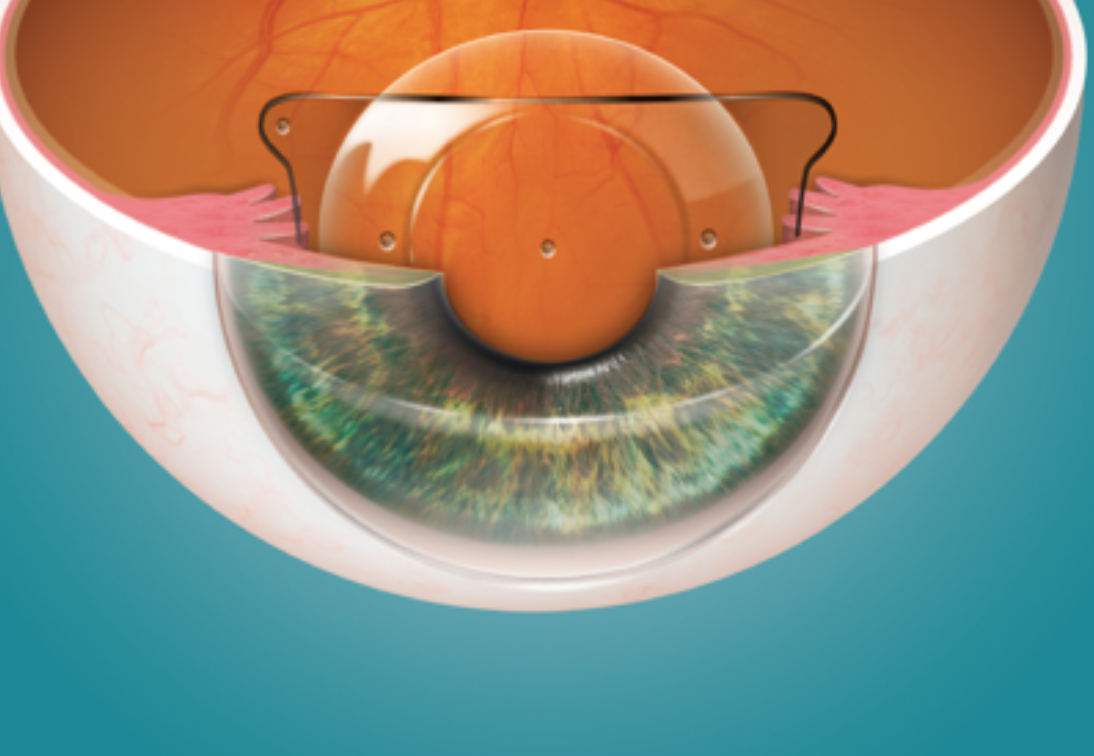Phakic ICL – Non-Corneal Vision Correction, Safe for Sensitive Eyes

Illustration of Phakic ICL placement – no corneal incision involved.
When glasses and contact lenses are no longer ideal, non-corneal vision correction methods are gaining popularity. Among them, Phakic ICL—a modern intraocular lens technology that doesn’t harm the cornea—is emerging as a breakthrough in treating myopia, astigmatism, and hyperopia.
What is Phakic ICL?
The Implantable Collamer® Lens is a biocompatible optical implant placed between the iris and the natural crystalline lens. It enables light to focus precisely on the retina without reshaping the cornea—a key distinction from procedures like LASIK or PRK. Crafted from Collamer®, a proprietary material known for its UV-blocking properties and high biocompatibility, this lens integrates seamlessly into the eye and minimizes the risk of inflammation or rejection.
How Phakic ICL Works?
It does not permanently change the eye’s structure. The lens is inserted through a tiny incision, folded, and then unfolds into place between the iris and crystalline lens. Because it doesn’t involve laser or corneal cutting, it avoids damage to the corneal nerves—a leading cause of post-LASIK dry eye.
Refractive Errors Treated by Phakic ICL
This phakic lens solution is engineered to correct myopia ranging from –3.0D to –20.0D, including astigmatism between 1.0D and 4.0D. Its high precision and adaptability make it an ideal option for individuals with complex refractive errors who are ineligible for procedures like LASIK or SMILE.
For those with severe nearsightedness (over –10.0D) or thin, irregular corneas, traditional laser surgery carries considerable risks such as reduced visual quality, persistent dry eye, or difficulty with accommodation. Since this implant doesn’t alter the cornea, it preserves the eye’s natural shape—promoting stable, long-term vision.
Moreover, the lens is also suitable for mild hyperopia and mixed astigmatism (a combination of myopia and astigmatism), conditions that are often challenging to manage with laser-based techniques. Advanced models like EVO+ now offer expanded correction ranges to treat even more complex cases effectively.
Indications include:
-
High myopia: –10.0D to –20.0D
-
Astigmatism: 1.0D to 4.0D
-
Mixed refractive errors (myopia + astigmatism)
-
Thin corneas or mild keratoconus
-
Chronic dry eye unsuitable for LASIK
Thanks to its versatility, this advanced intraocular lens is frequently considered a “last resort” for patients with no other corrective options but who still want freedom from glasses. It marks a significant leap forward in customized vision correction.
Who is a Good Candidate for Phakic ICL?

- Ages 21–45 with stable vision for at least 12 months
- Moderate to high myopia, with or without astigmatism
- No serious corneal, lens, or glaucoma conditions
- Not pregnant or breastfeeding
- Sufficient endothelial cell density
Why Phakic ICL is Considered a Non-Corneal Vision Correction Technology
Phakic ICL stands out among vision correction options for its ability to improve eyesight without damaging the cornea—one of the eye’s most sensitive and vital structures. This is a game-changing advantage in modern ophthalmology.
It works as a transparent lens placed behind the iris and in front of the natural lens, without cutting, burning, or reshaping the cornea. This approach ensures:
- Preservation of the cornea and natural eye structure
- No dry eye or corneal scarring
- Removable lens if needed—fully reversible
Detailed Comparison: Phakic ICL vs. LASIK vs. SMILE
| Criteria | Phakic ICL | LASIK | SMILE |
|---|---|---|---|
| Mechanism | Implantable lens | Laser corneal cutting | Laser corneal extraction |
| Corneal involvement | None | Yes | Yes |
| Dry eye risk | Rare | 30–60% | Common |
| Recovery | 1–2 days | 2–5 days | 3–7 days |
| Thin corneas | Suitable | Not suitable | Limited |
| Removability | Yes | No | No |
Thanks to its non-corneal approach, Phakic ICL is considered a modern and highly personalized vision correction technology that fits today’s lifestyle demands: safe – effective – fast recovery – highly aesthetic.
Durability and Upgrade Flexibility
A major advantage of Phakic ICL is that it can be removed or upgraded if needed in the future. Since it doesn’t permanently alter the cornea, Phakic ICL helps preserve the eye’s natural shape, making future treatments like multifocal IOLs easier for aging patients.
Overall, Phakic ICL is the top choice for those with myopia or astigmatism, especially those with thin corneas, dry eyes, or high refractive errors unsuitable for laser surgery. With high safety, quick recovery, and outstanding visual results, it’s the ideal solution for those who want to ditch glasses while keeping their corneas untouched.

 vi
vi 05-Aug-2025
05-Aug-2025












 0916.741.763
0916.741.763 Appointment
Appointment